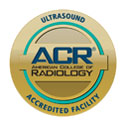
InterVasc is currently closed.
Minimally Invasive Cancer Treatments
Interventional radiologists are physicians who specialize in minimally invasive, targeted treatments performed using imaging for guidance to treat diseases nonsurgically through the blood vessels or through the skin. They can attack cancerous tumors without medicating or affecting other parts of the body. Interventional radiologists can also help diagnose cancer, through a variety of techniques: A CT scan, MRI or ultrasound can be performed to see inside the body and identify a tumor, or an image guided needle biopsy can be done to remove tissue samples and look for cancer cells. Needle biopsy is typically an outpatient procedure with very infrequent complications; less than one percent of patients develop bleeding or infection. In about 90 percent of patients, needle biopsy provides enough tissue for the pathologist to determine the cause of the abnormality.
There are two main methods by which interventional radiologist can treat cancer. The first is to use the vascular system to deliver Chemotherapy medicine directly to the cancer's blood supply. This limits damage and toxicity to the rest of the body while delivering the highest possible dose of chemotherapy to the cancer. This technique is often used in combination with embolization, in which small beads or other embolic agents are injected to the site of the tumor, preventing chemotherapy flow to healthy areas of the body and allowing a higher dose of chemotherapy to be used locally at the site of the tumor. In some cases, a technique called radioembolization is used. This is similar to chemoembolization, except that radioactive microspheres are delivered to the tumor, where they exert local radiation and kill cells. The second method is to "cook" (radiofrequency ablation) or "freeze" (Cryoablation) the cancer by sticking a small, energy-delivering needle directly into the cancer that heats or freezes the cancer without significant damage to nearby normal tissue. Since these techniques are delivered at the cancer specifically, patients have fewer overall side effects.
Ablation means "destruction" or "detachment". There are two types of thermal ablation:
- Radiofrequency ablation (RFA). In this procedure, the interventional radiologist guides a small needle through the skin into the tumor. Radiofrequency energy (similar to microwaves) is transmitted to the tip of the needle, where it produces heat and kills the tumor near the needle. The tumor remains as a mass or scar of dead tissue. RFA is ideal for nonsurgical candidates and those with smaller tumors.
- Cryoablation. Cryablation is similar to RFA, but rather than killing the tumor with heat, it uses an extremely cold gas to freeze it. The "ice ball" that is created around the needle grows in size and freezes and destroys the tumor cells.



